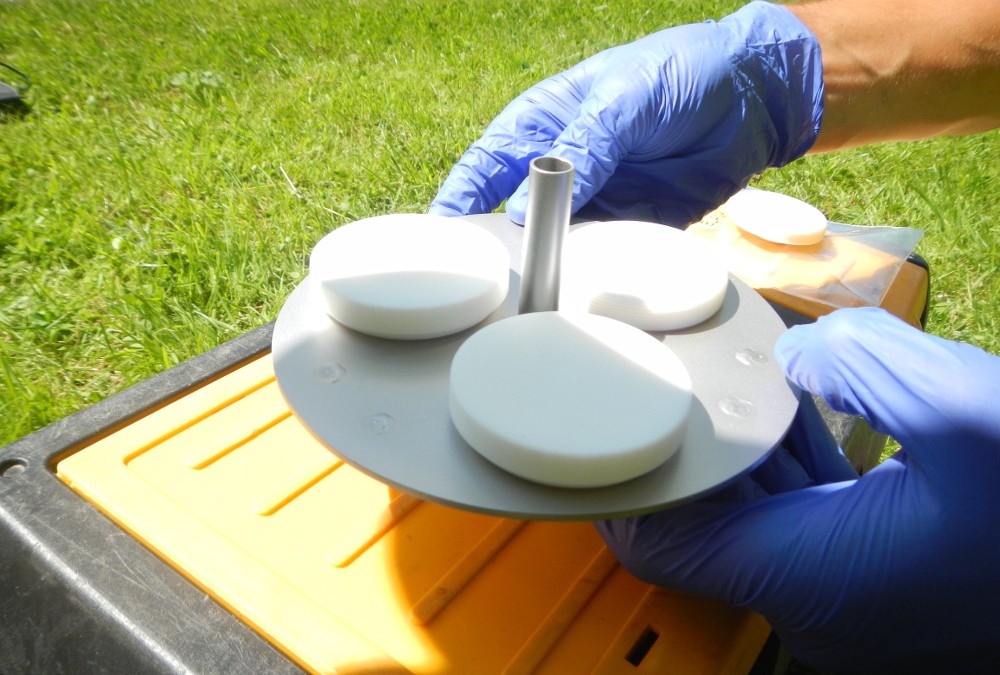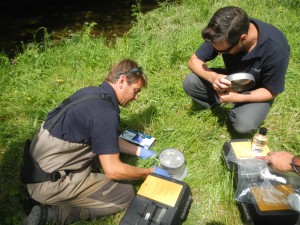Throughout this year, we’ve been developing and expanding our water quality monitoring capabilities here at the Trust, which has included the purchase and use of an innovative new ‘passive sampling’ system. Chemcatcher™ passive samplers, were developed by the University of Portsmouth and their application, in the method described below, have been further developed by South West Water.
Heavy rainfall can cause run-off events that result in sharp spikes in the amount of chemicals entering the watercourse. Some pollutants, such as acid-herbicides and other pesticides, are flushed through the river system extremely quickly and are therefore easily missed when taking weekly or monthly spot samples. Spot sampling is currently the most common approach used in water quality monitoring, where a sample of river water is collected and taken away for analysis. However, spot sampling only provides us with a ‘snapshot’ of the water quality at that one time and multiple samples need to be taken throughout the year, and in a variety of weather and flow conditions, in order to build up a detailed analysis of the water chemistry. Many of the chemicals that we are interested in may only reach a detectable level after periods of heavy rainfall and can be flushed though the system relatively quickly. Unless spot sampling occurs at this time, it is possible that some pollutants may be underestimated or missed from the analysis entirely.
We’ve used our new Chemcatcher™ passive samplers this year on both the River Fowey and the River Tamar, where they were deployed at strategic sites throughout each catchment and left in place over a period of approximately two weeks. The samplers were deployed when heavy rain was expected during early summer, the period during which acid herbicides are frequently used to control unwanted weeds on farmland. This approach enables us to detect these ‘missing’ pollutants. Each unit houses three Chemcatcher™ discs (for results in triplicate), each of which contains an anion exchange receiving disc to which pollutants in the water column will bind.
Chemcatcher™ are capable of detecting numerous acid-herbicides that originate from diffuse agricultural pollution, as well as metaldehyde (used to control slugs) and some common pharmaceuticals, which enter the system via domestic waste outlets.
Once retrieved from the sampling sites, the discs were packaged up and sent to the labs at South West Water for analysis where they calculate a time-weighted average concentration of target pollutants. Results are compared with concentrations found in spot samples taken at the time of deployment and clearly showed that in some sub-catchments, the average concentration over a two week period was much higher than recorded in the spot sample. This indicates that there were significant spikes in pollutant load during the monitoring period.
High concentrations of acid herbicides not only have a detrimental effect on the ecology of the river, they are also expensive for South West Water to remove at the Water Treatment Works. Detecting these chemicals and understanding where they have come from in the catchment helps us to work with land mangers and effectively target on-the-ground advice and interventions.
This short film shows us deploying the Chemcatchers™ in the Fowey catchment and explains some of the science and the practicalities in more detail:


